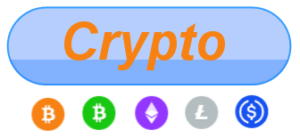The Virtual Brain
A Review on The Virtual Brain Project
Simulation software is constantly giving us new opportunities to teach the world about all kinds of subjects. Any average student in college, or even high school, likely has used simulation software at one point or another (especially engineers). One unique team of innovators has taken simulation software and neuroscience to produce a globally accessible research tool that incorporates neuroscience information gathered from all over the globe into a virtual brain simulation software.
The Virtual Brain project, lead by Viktor Jirsa PhD., models brain behavior as it would be observed in clinical scanners. The principles of computational neuroscience such as large scale networking are used to simulate connectome network dynamics using large scale connectivity.
A 3D model of the brain provides the spacial and location simulation components. A connectivity matrix defines signal strengths and signal times between nodes that are identified along the 3D model. Node points use existing cortical connectivity information to simulate isolated neural mass models.
The idea is to add known information in small scales as simulated points in the 3D model. These small points are connected using realistic signal strengths and times based on research and simulated by algorithms. The overall picture is a simulated 3D digital brain that models synapse functions off of user inputs with variances and parameters that can be customized for a specific study.
The simulation is still based on a very limited scale compared to an actual human brain. The smaller the virtual component, the more of a default application it is at the core. With further algorithmic and network dynamic applications added to the program the scale will be able to grow with more and more detailed simulation additions to smaller and smaller individual components.
The key is getting realistic synapse strengths and timings that match realistic 3D modeling of a brain. Getting the biology parameters simulated accurately is the only way that a realistic functionality simulation can be achieved. Otherwise, it's just another computer program.
As can be imagined, the more input gathered from as many sources as possible, the more complete and accurate this simulation can become. This is why the Virtual Brain software allows user contribution as an open source software to add to the virtual network. In this way, there is no small group that is responsible for the creation of this project, but rather it is a global effort.
The software itself is free to download and can operate on most personal computers. The interface is fairly user friendly and 3D graphics dominate the interesting part of it all. In the interface, a user can observe specific regions of the virtual brain, create unique parameters, import and export data, and contribute to the source code.
The virtual Brain project is a long way from being capable of modeling an entire human brain; but this project is an incredibly well organized approach to reaching that goal with high potential. One can appreciate the irony that the virtual inner network of the brain is simulated on a digital global network, which is absolutely appropriate.
Information on the Virtual Brain Project and the software download can be found here: The Virtual Brain



